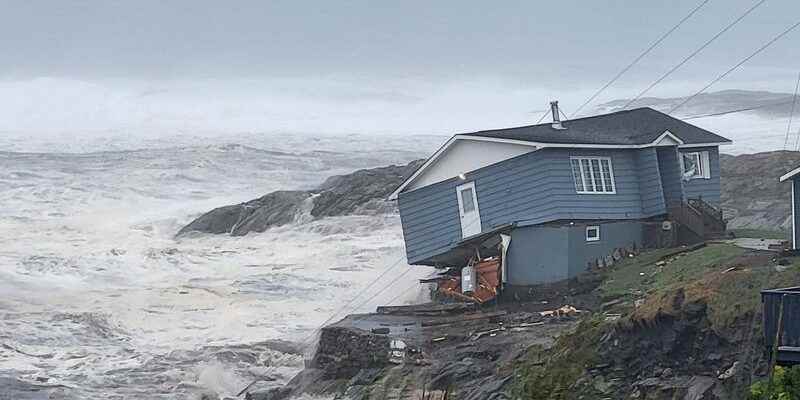The historic storm battered eastern Canada with hurricane-force winds, ripping out drains, uprooting trees and power lines, and reducing many homes “to a mere pile of rubble.”
The Canadian Hurricane Center has rated Fiona as the weakest landfall storm ever recorded in Canada.
Prime Minister Justin Trudeau said Canadian Armed Forces will be deployed to help with the cleanup, adding that Fiona caused significant damage and recovery will take a big effort.
Despite the intensity of the storm, there were no serious injuries or deaths, which government officials say is the result of residents heeding repeated warnings.
Yet thousands of residents of Nova Scotia, Prince Edward Island (PE) and Newfoundland were without power and had to contend with patchy telecommunications connections, and government officials have asked residents to be patient.
They warned that in some cases it could take weeks before essential services are fully restored.
“We know the damage is very extensive, probably the worst we have ever seen,” Prince Edward Island Premier Dennis King told reporters on Saturday.
“The people of the island … need to know that our road to recovery will take weeks or more. It will take everyone on board,” he added.
Several college students lined up for food outside generator-powered convenience stores due to Fiona’s power outage. The Canadian Red Cross has launched a fundraising campaign to support those affected.
Government officials have said the extent of the destruction will only be known in the days and weeks to come. But with gusts of up to 170 km/h swept away homes, bridges and roads, Fiona is reminiscent of the damage wrought by other storms, including Hurricane Dorian in 2019, whose toll insurance is estimated at 105 million Canadian dollars.
For details of the worst natural disasters in Canada, click.
Premiers of affected provinces have told the federal government they need long-term support around public and critical infrastructure after the storm ripped the roofs off schools and community centers, as well as quick help businesses and families to quickly return to normal life.
The storm also severely damaged fishing ports in Atlantic Canada, which could hurt the country’s C$3.2 billion lobster industry unless it is fully recovered before the start of the season. in a few weeks.
“These fishermen have a very immediate need to be able to access their livelihood once the storm has passed,” said Dominic LeBlanc, Canada’s Minister of Intergovernmental Affairs, on Saturday.
“So this is exactly the kind of work that will accompany the provincial authorities in the weeks and months to come,” he added.
